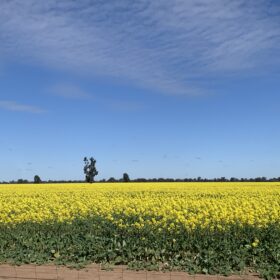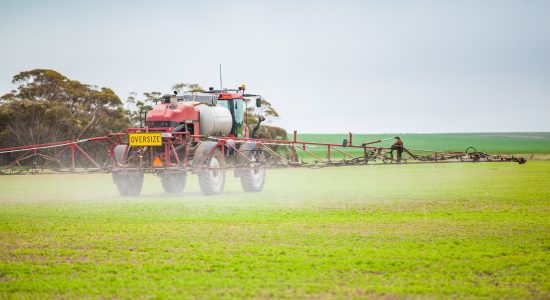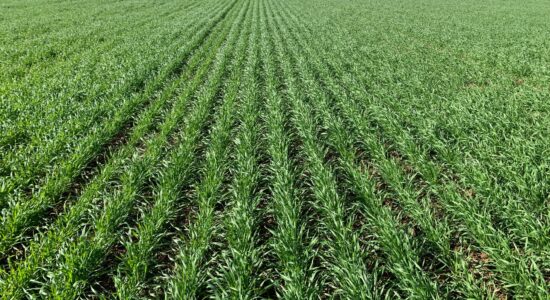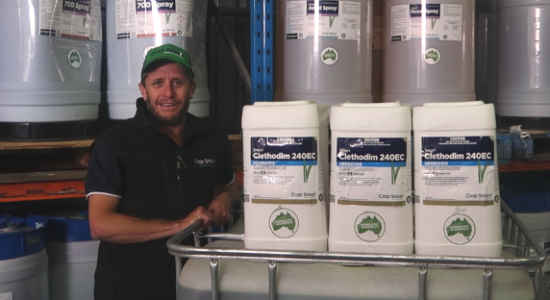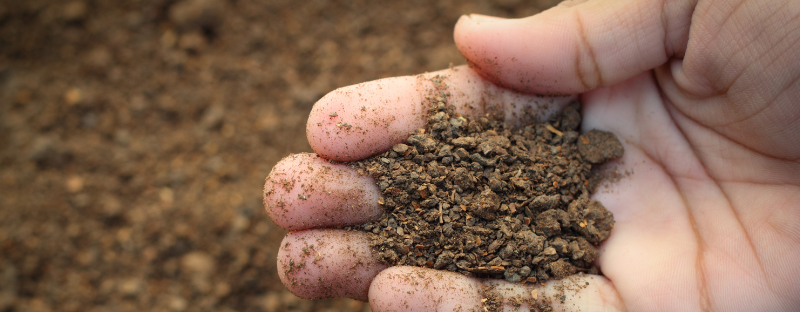
Revisiting your Nitrogen strategy
Always have a plan, but be prepared to change it at any given moment. – K. Chrisbacher
This season has provided us with many twists and turns. Our best made plans for yield are most often based on planned nitrogen strategy. However it may be time to revisit the plan, or change the plan.
With crop yield, there are many variables. We will not be covering all of the variables in this article. When it comes to nitrogen, know that kilograms in will drive kilograms out. Our Nitrogen strategies are almost always based on this principal. If your sheds and silos are not stocked with adequate supplies of Urea now, what are our options if new shipments of Urea are delayed?
It is time to sit down and review your yield targets. This might be a complex calculation on a spreadsheet, website or app or it might be a simple back of the envelope equation. Whichever you choose, you need to understand your yield potential and N requirements. The table shows common Nitrogen fertiliser rates to apply 40kg N/ha.
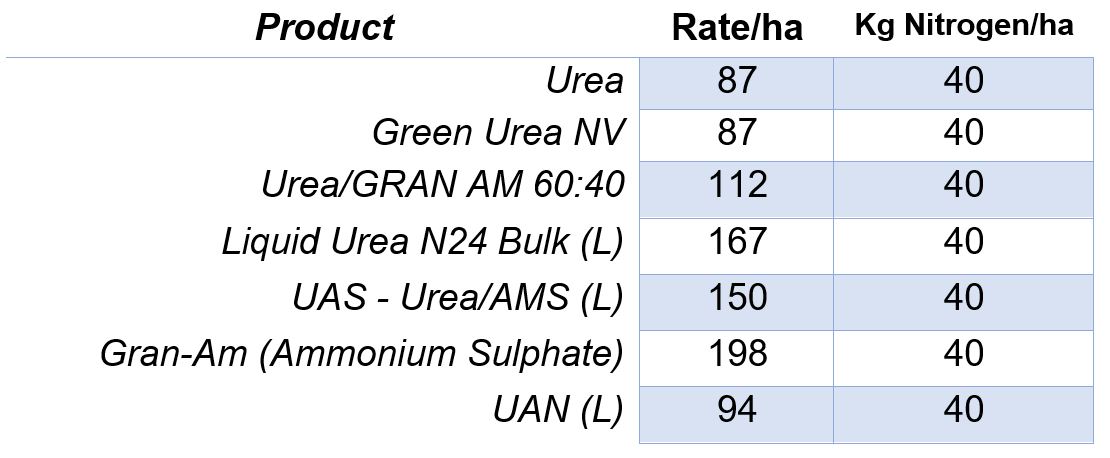
Common Nitrogen Fertiliser Rates to Apply 40kg N/ha
Most of the nitrogen strategies are based on Urea (46 N). If you cannot access urea, what are your options?
This will come down to availability, price, storage and application methods.
If you have urea available:
Discuss your options and strategy with your Agronomist. Some growers are considering using lower application rates to a larger area rather than sticking with the plan of what each crop needs now to reach their yield potential. They are applying 30-50% of the target rate to keep the crops sufficient in nitrogen until the next shipment arrives. Targeting the cereal-on-cereal rotations first or the crops with the best yield potential is up to you.
The lower rate strategy is to avoid chronic N shortages in crops rather than providing the crop’s total requirements.
If you DO NOT have Urea available:
If you want to stay with a granular product you can run with Ammonium Sulphate. This product is a combination of nitrogen (N) and sulphur (S). The nitrogen and sulphur content can vary slightly between products but as a general figure they contain 20kg/N and 24kg S. If you wish to apply 40kg of Gran Am (Ammonium Sulphate) you would need to apply it at a rate of 198kg/ha. The price per hectare for this product will be roughly double the cost of Urea at the equivalent rate of N. You may decide to apply lower rates with Ammonium Sulphate to buy you time until the urea arrives.
Another option is to apply UAN or liquid urea at low rates to buy you time until your urea arrives. This is a similar strategy to the lower rates of urea but this time it is with a liquid product applied with the spray boom. You can use your standard nozzles as leaf burning will not be an issue with lower application rates. You may also be able to apply this with herbicides and fungicides (check compatibilities).
UAN is a liquid formulation containing Urea and Ammonium Nitrate. Leaf uptake from these liquid products is possible but only up to a limit. Root uptake from the soil is still the largest and most efficient N uptake pathway. The cost of Liquid Urea is roughly 50% higher than granular urea. UAN is more than double the price of granular urea.
While urea stocks may be low, there are several alternative options that can provide nitrogen to your crops in the interim period before urea is available. Don’t hesitate to get in touch with the Crop Smart team if we can assist.

